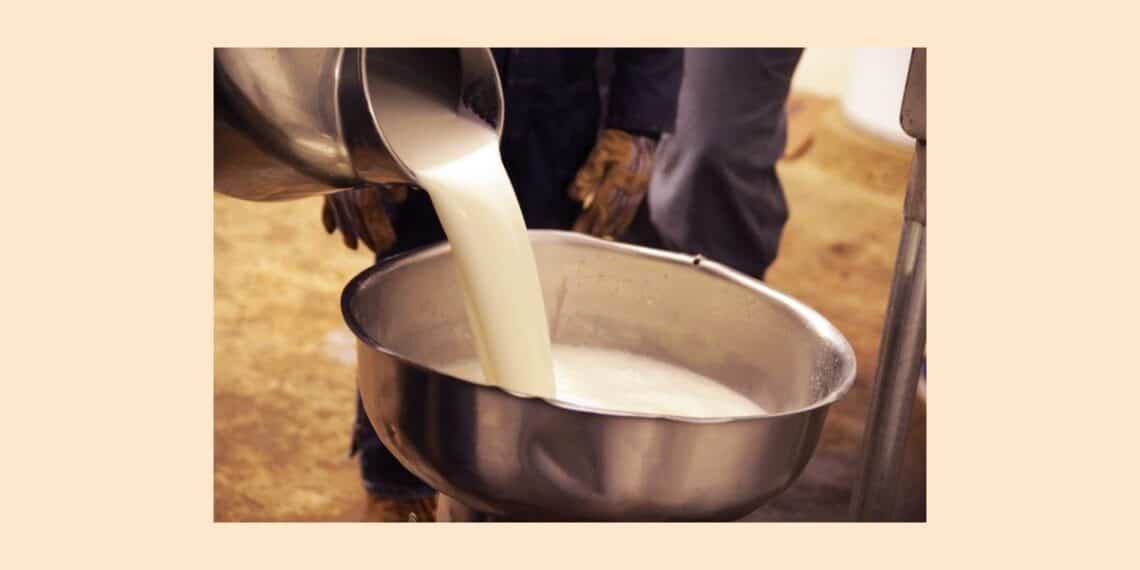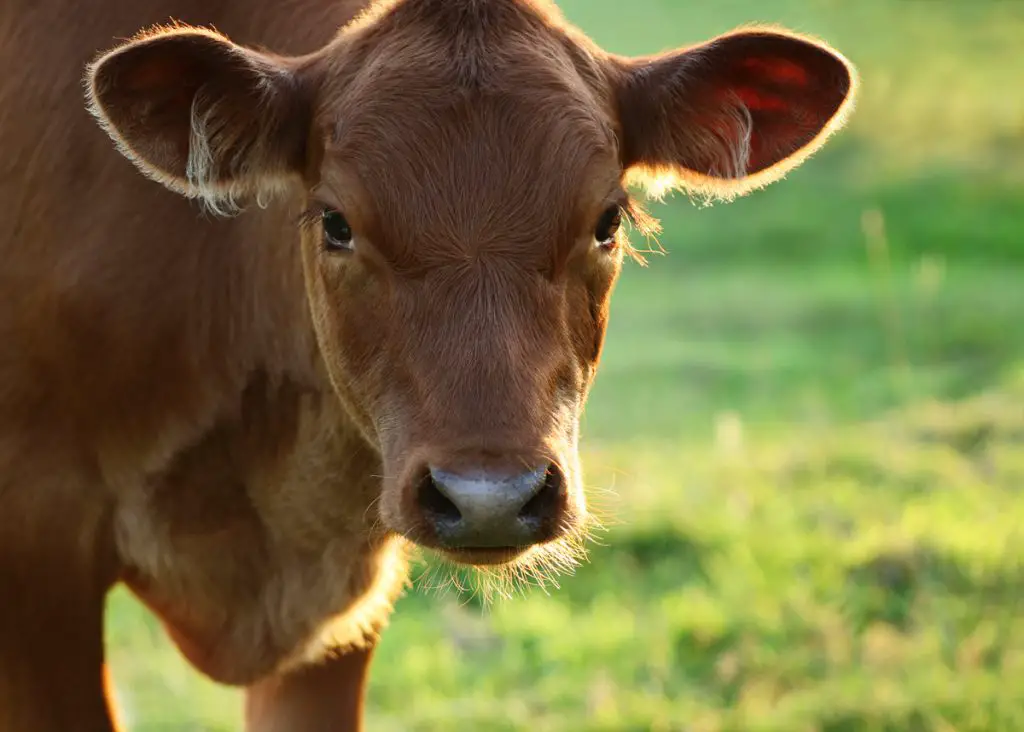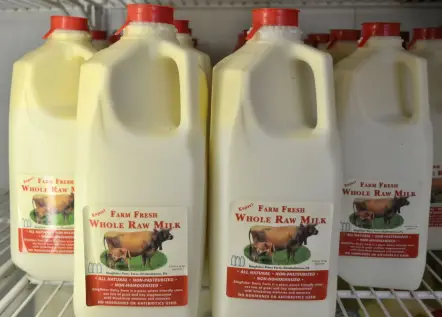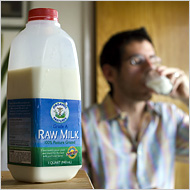As I’m sure most of you know by now, there are very few subjects as emotionally charged as the choice of one’s diet. Sexual relations, marriage and finances come to mind as similarly charged subjects and, like diet, we are all sure we know all we need to know about each of these subjects. The subject of milk, as I have discovered during the past four years, when properly viewed will challenge every notion you currently have about what is good food and what isn’t. The story of milk is complex and goes something like this.
Back in the preprocessed food era (that is before about 1930 in this country) milk was considered an important food, especially for children. Not only was there an entire segment of our economy built up around milk but, as I remember, each house had its own milk chute for the delivery of fresh milk directly to the house. It was unquestioned that milk was good for us and that a safe, plentiful milk supply was actually vital to our national health and well-being. It was also a time (now I’m referring to the early part of the century) when many of the illnesses which we currently suffer from were rare. As an example, family doctors would often go their whole careers without ever seeing a patient with significant coronary artery disease, breast or prostate cancer, whereas current doctors can hardly go one month without encountering a patient with such an illness. Furthermore, as scientists such as Weston Price, DDS discovered, there were pockets of extremely healthy, long-lived people scattered about the earth who used dairy products in various forms as the staple of their diets — further evidence that milk and its by-products were amongst the most healthful foods man has ever encountered.
If we fast forward to the 1980’s, we now find an entirely different picture. For one thing, there have been numerous books written in the past decade about the dangers of dairy products — the most influential being a book by Frank Oski, MD, the current chairman of pediatrics of Johns Hopkins University and perhaps the most influential pediatrician in this country. It’s called Don’t Drink Your Milk. In it Oski pins just about every health problem in children to the consumption of milk, everything from acute and chronic ear infections, constipation, asthma, eczema, and so on. Secondly, just about all patients I have now in their initial visit proudly announce that they have a good diet and that, specifically, they don’t eat dairy (which they pronounce with such disdain).
One might well ask “Where’s the truth in this picture”. Perhaps the experiments of Dr. Francis Pottenger in the 1940’s can help to solve this mystery. In these experiments Dr. Pottenger fed one group of cats a diet consisting of raw milk, raw meat and cod liver oil. Other groups were given pasteurized milk, evaporated milk or sweetened condensed milk instead of raw milk. The results were conclusive and astounding. Those that ate raw milk and raw meat did well and lived long, happy, active lives free of any signs of degenerative disease. Those cats on pasteurized milk suffered from acute illnesses (vomiting, diarrhea) and succumbed to every degenerative disease now flourishing in our population, even though they were also getting raw meat and cod liver oil. By the 3rd generation a vast majority of the cats were infertile and exhibited “anti-social” behavior — in short, they were like modern Americans.
Since the 40’s the “qualities” of milk have been extensively studied to try to find an explanation for these dramatic changes. Studies have shown that before heating, milk is a living food rich in colloidal minerals and enzymes necessary for the absorption and utilization of the sugars, fats and minerals in the milk. For example, milk has an enzyme called phosphatase that allows the body to absorb the calcium from the milk. Lactase is an enzyme that allows for the digestion of lactose.
Butterfat has a cortisone-like factor which is heat sensitive (destroyed by heat) that prevents stiffness in the joints. Raw milk contains beneficial bacteria as well as lactic acids that allow these beneficial bacteria to implant in the intestines. All of these qualities are destroyed during pasteurization. Once heated, milk becomes rotten, with precipitated minerals that can’t be absorbed (hence osteoporosis), with sugars that can’t be digested (hence allergies), and with fats that are toxic.
Raw milk has been used as a therapy in folk medicine — and even in the Mayo Clinic — for centuries. It has been used in the pre-insulin days to treat diabetes (I’ve tried it — it works), as well as eczema, intestinal worms, allergies, and arthritis, all for reasons which can be understood when we realize just what is in milk — such as the cortisone-like factor for allergies and eczema.
Another way we ruin milk is by feeding cows high protein feed made from soybeans and other inappropriate foodstuffs. Rarely is anyone truly allergic to grass-fed cow’s milk.
Fresh raw milk, from cows eating well-manured green grass is a living unprocessed whole food. Compare this to the supposedly “healthy” soy milk which has been washed in acids and alkalis, ultrapasteurized, then allowed to sit in a box for many months.
The Pottenger cat studies provide a simple but profound lesson for all Americans: Processed, dead foods don’t support life or a happy well-functioning society. We must return to eating pure, wholesome, unprocessed foods, including whole raw milk from pasture fed cows.
In my practice I ALWAYS start there — I encourage, insist, even beg people to eat real foods— no matter what the problem. Often with just this intervention the results are gratifying. SO, find a cow, find a farmer, make sure the cow (or goat, llama, or whatever) is healthy and start your return to good health!
Reprinted from the Price-Pottenger Nutrition Foundation Health Journal
Vol 21, No 2
(619) 574 7763









Thank you so much for your article and the work that you do. I am fortunate to live in a state where raw milk can be sold legally and have been enjoying it for some time.
I would say that Dr. Thomas Cowan is twin brother of Dr. Bathia. As to raw milk, I found somebody near the small farm I live in that supplies raw milk to my house. My wife and I are using raw milk for about two months and feel great. Let’s see what happens from now on. I like this article by Dr. Cowan for that old study seems very convincing to me.
Weston Price also found that there was a “Factor X” that was found in cream and butter from pastured, not grain or soybean fed, cows. Among other things, this Factor X is associated with, among other things, a higher rate of cardiovascular disease, osteoporosis, and cancer — including prostate cancer.
Turns out that Factor X is vitamin K2, which cows can only produce if they have plenty of green feed. See “Vitamin K2 and the Calcium Paradox” by Kate Rhéaume-Bleue.
Yes, Dr. Cowan does look suspiciously like Dr. B!
I strongly relate to this sentence from the end of the article, for it’s what I try to do too:
“In my practice I ALWAYS start there — I encourage, insist, even beg people to eat real foods— no matter what the problem.”
Question: correct answer earns you 10 points: Cow’s milk is for it’s ——— (hint: answer starts with C and ends in F)
Great article, thank you very much!
I have a question for you: at home, we intake raw milk. You say milk becomes rotten with heat, so can’t we warm it not at all?
Thank you.
Yes, you can warm up the milk, but don’t boil it! Boiling it destroys the enzymes and many vitamins too. So, don’t heat it higher than it needs to be just to enjoy a warm glass of milk.